|
December 2005 - Tank of the Month
Dave Tea

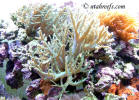


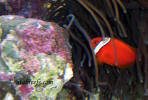
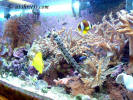

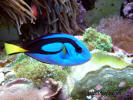
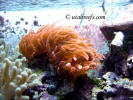

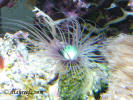

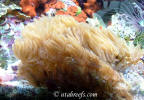

Downloads: (right click and select save as for
better results)
Presentation (795k)*
Video (4.28 meg)
1. Your name, location and occupation. Include how long you
have been an aquarist, how long you have been a WMAS member and how
you heard of our club.
Name: Dave Tea
Location: Brigham City
Occupation: Arborist
How long have you been in the hobby? 3 years
How long have you been a member of the club? 3 years
How did you hear about the WMAS? Shane Heil
2. Describe your tank. Acrylic or glass? Size in dimensions
and gallons. How long has it been set up?
Acrylic / Glass: Glass
Size in gallons: 75
Dimensions: 48 x 24 x 18
Age: 3 years (at Dave�s house)
3. Describe your lighting system, including your
photo-period. Add what you would change if you could.
2 x 175w MH (10K XM Bulbs)
2 x 96w PC (Actinic)
4. Describe your filtration system. Include: How deep is
your sand bed, plenum, your skimmer size and model and how long you
run it, your circulation pumps (how many and their size in gallons
per hour), your sump/refugium including Reverse Daylight, biowheels
and skilters, HOT systems, clean up crew.
The sand bed is considerably deeper than most
reef tanks; 5-6 inches. The tank houses approximately 60 lbs of
fully encrusted LR. Water from the display tank flows into the sump
through a filter sock and then into a chamber with Berlin Skimmer.
The water is returned to the display using a RIO 2500. A smaller
powerhead (RIO 900) is also included in the tank for additional
water movement.
5. What are your maintenance techniques? Include water
change schedule.
Monthly, 30 gallon water changes along with
changing the filter sock. Glass is scraped as necessary, however,
the large rock anemone makes this difficult as it has grown directly
on the front glass.
6. What additives do you use? Kalkwasser, Strontium,
Molybdenum, Iodine, Magnesium, Other
No additives are regularly
used on this tank. All top off is all RO/DI water. Calcium and
alkalinity are maintained by water changes and are not regularly
monitored.
7. Describe your feeding philosophy. Include your
schedule, and what you prefer to feed your system?
Dry flake daily. (every morning). Frozen brine
weekly. Green water occasionally.
8. DIY ie, Calcium reactor, stand / hood, skimmer, sump,
ect. Any Do-it-yourself items of interest? Web-sites that you may
have referenced?
Tank was purchased completely set up and moved
into Dave�s house. He was literally tank sitting (the whole set-up)
and fell in love with the hobby and decided to buy the tank.
Green water and rotifers are grown to support the breeding of the
tomato clowns housed in this tank.
9. Stand and Canopy
Wood: Oak
Color: Natural
Special Characteristics: The top of the hood is completely
open.
10. Items of interest: Favorite or unusual Fish, coral, or
invertebrate
Favorite Fish: Pair of breeding tomato
clowns
Favorite Coral: Pink cauliflower (2 months old)
Favorite Clam: 6� Derasa
11. Can you include a table showing your elemental levels
of Ca+, alkalinity, S.G., temperature, pH and other interesting
testables?
Parameters are not routinely monitored.
12. What experiences and challenges have you had with the
tank? Any lessons learned? Is there anything you do differently than
others (or differently than previously)? If so, why?
Avoid acrylic tanks. The 300 gallon acrylic
tank is difficult to clean. Coraline is difficult to remove and
seems to grow very well in the areas were the acrylic has been
buffed and polished.
Tanks:
75 gallon � glass
300 gallon � acrylic
20 gallon � glass
18 gallon � glass x 3
28 gallon � glass
Plus breeder tanks and phyto tanks.
The hobby dominates Dave�s house. There are
many display tanks throughout hosting 6 pairs of mated clownfish of
different species and 17 anemones. Unfortunately, not all the pairs
are as prolific as Dave�s tomato clowns. These two fish spawn
regularly and Dave�s ability to rear the fry appears to be limited
only by the amount of live foods (rotifers) that can be maintained.
Dave�s success in breeding and raising clownfish fry is
unprecedented in the WMAS. He has spent countless hours researching
proven processes and has learned through experiments of his own how
best to raise the fry through to adult specimens. If you�ve bought a
juvenile, tank raised tomato clown at any location along the Wasatch
Front, it likely came from Dave. He is currently building a
greenhouse to expand his hobby and provide a space that he can fully
dedicate to his passion.
*You will need Adobe
Acrobat to view the presentation. If you don't have Adobe
Acrobat you can download it free from
www.adobe.com.
For best results save the documents to your
local computer by right clicking on the file you
want to download a select "save target
as...". |